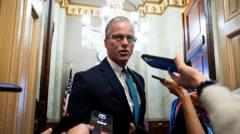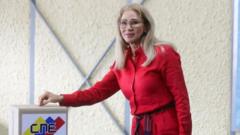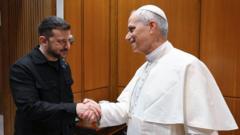The Vatican conclave resumes for its second day of voting as cardinals seek to elect a successor to Pope Francis. With crucial deliberations ahead, uncertainty looms over potential candidates and the future trajectory of the church amidst evolving dynamics.
Papal Conclave Day Two: Cardinals Continue Voting Amidst Uncertainty

Papal Conclave Day Two: Cardinals Continue Voting Amidst Uncertainty
As a key conclave meeting unfolds, the 133 voting cardinals reconvene to select a new pope after a day of indecision, amid concerns over leadership direction within the Catholic Church.
The Vatican conclave continues its deliberations in search of a successor to Pope Francis, who passed away in April. The pivotal gathering of 133 cardinals is reconvening today for a second day of voting, following an inconclusive first round yesterday that failed to achieve the necessary two-thirds majority for a selection. The cardinals have fully isolated themselves in the Sistine Chapel, adhering to strict oaths of secrecy and without any electronic devices.
This conclave is notable for being the largest in history, with many cardinals encountering one another for the first time. The newly appointed prelates bring various priorities and opinions which may heighten the complexity of the selection process. While some progressive factions urge for change and greater inclusiveness, conservatives seek to maintain traditional values, leading to a potentially fragmented discussion.
Today's proceedings commence with the expectation of four voting sessions throughout the day until a consensus is reached. The ritual follows a centuries-old tradition where ballots are burned after each voting round, with smoke signals emerging to declare whether a decision has been made—black smoke for no agreement, and white for a new pope.
Potential successors to Pope Francis include Cardinal Pietro Parolin and Cardinal Luis Antonio Tagle, each reflecting diverse directions for the church's future. The election raises questions about whether the new leader will continue the current pope's path of openness or adopt a more conservative stance.
As the cardinals engage in this ancient yet carefully orchestrated electoral process, the wait continues for both the faithful and observers worldwide to see how this pivotal moment in Catholic history unfolds. The conclave process promises to not only reflect the immediate needs of the church but also chart a course for its future in a rapidly changing world.






















